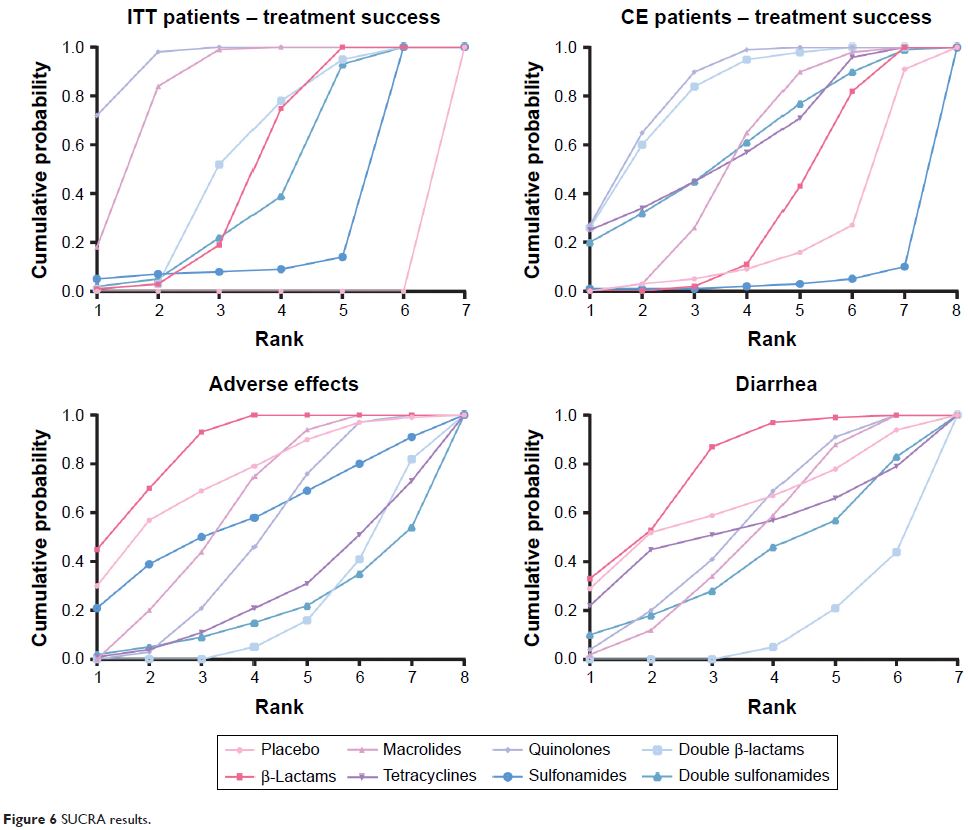9 0 8 0 2
论文已发表
注册即可获取德孚的最新动态
IF 收录期刊
- 2.6 Breast Cancer (Dove Med Press)
- 3.9 Clin Epidemiol
- 3.3 Cancer Manag Res
- 3.9 Infect Drug Resist
- 3.6 Clin Interv Aging
- 4.8 Drug Des Dev Ther
- 2.8 Int J Chronic Obstr
- 8.0 Int J Nanomed
- 2.3 Int J Women's Health
- 3.2 Neuropsych Dis Treat
- 4.0 OncoTargets Ther
- 2.2 Patient Prefer Adher
- 2.8 Ther Clin Risk Manag
- 2.7 J Pain Res
- 3.3 Diabet Metab Synd Ob
- 4.3 Psychol Res Behav Ma
- 3.4 Nat Sci Sleep
- 1.9 Pharmgenomics Pers Med
- 3.5 Risk Manag Healthc Policy
- 4.5 J Inflamm Res
- 2.3 Int J Gen Med
- 4.1 J Hepatocell Carcinoma
- 3.2 J Asthma Allergy
- 2.3 Clin Cosmet Investig Dermatol
- 3.3 J Multidiscip Healthc

抗生素治疗支气管炎的成功率和安全性的网络荟萃分析
Authors Wang J, Xu H, Liu P, Li M
Received 12 April 2017
Accepted for publication 5 July 2017
Published 9 August 2017 Volume 2017:12 Pages 2391—2405
DOI https://doi.org/10.2147/COPD.S139521
Checked for plagiarism Yes
Review by Single-blind
Peer reviewers approved by Dr Charles Downs
Peer reviewer comments 3
Editor who approved publication: Dr Richard Russell
Abstract: The purpose of this study was to compare the relative efficacy and safety
of different antibiotic drugs and recommend superior regimens in the treatment
of bronchitis. With respect to the antibiotic comparisons against quinolones in
terms of intention-to-treat patients, we concluded that quinolones had
advantages over placebo, β-lactams, sulfonamides, and double β-lactams.
Concerning treatment methods for clinically evaluable patients, quinolones
demonstrated better performance than β-lactams and sulfonamides. The secondary
effects of macrolides, quinolones, and double β-lactams were significantly more
adverse than β-lactams with odds ratios (ORs) of 1.5 (95% credible interval
[CrI] =1.1–2.0), 1.7 (95% CrI =1.2–2.3), and 2.7 (95%
CrI =1.8–4.1), respectively. Significant differences in the prevalence of
diarrhea as a secondary effect were only identified among the comparisons of
double β-lactams against β-lactams and macrolides (OR =5.0, 95%
CrI =2.1–12.0; OR =3.0, 95% CrI =1.7–5.4, respectively).
Quinolones can be recommended as the superior treatment for bronchitis, in accordance
with our cluster analysis with surface under the cumulative ranking curve. The
primary outcomes of network meta-analysis indicated that quinolones showed the
best performance among the 8 treatments studied, although β-lactams showed the
lowest risk of adverse side effects. Quinolones are recommended as the primary
treatment option for bronchitis patients, having taking into account the
success rates and safety profiles of the eight drugs studied here.
Keywords: bronchitis,
antibiotic treatments, success rate, safety, network meta-analysis
